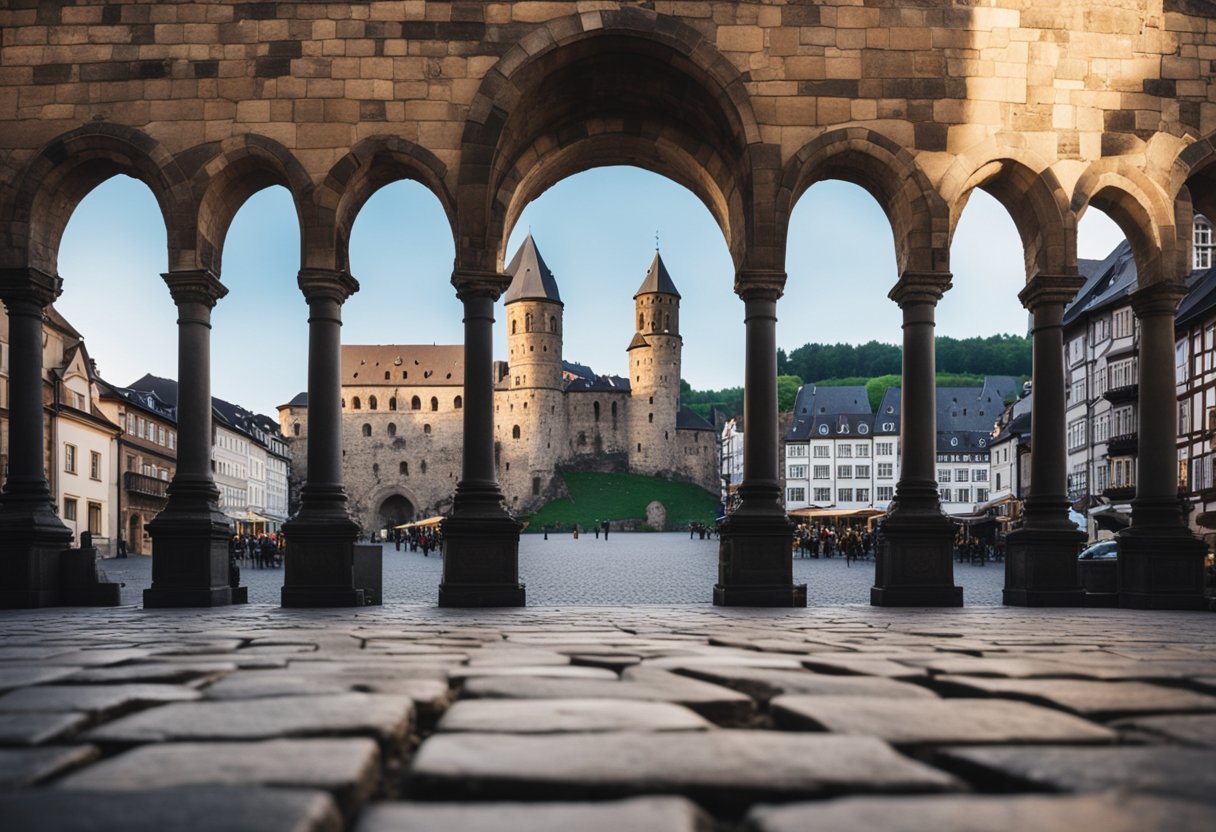Trier is a gem nestled in the west of Germany, often flying under the radar for most travelers. As Germany’s oldest city, founded by the Roman Emperor Augustus in 16 B.C., it boasts a wealth of ancient history and stunning architecture. Positioned along the Moselle River, just a short distance from the Luxembourg border, Trier combines rich historical significance with charming scenery.
Visitors flock to Trier for its remarkably preserved Roman ruins, with landmarks such as the Porta Nigra and the Roman Imperial Baths drawing particular attention. The city’s landscape of vine-covered hills and red sandstone creates a picturesque backdrop for these ancient structures. It’s a place where the past seamlessly interweaves with the present, making every corner of the city worth exploring.
Adding to its historical charm, Trier is also notable as the birthplace of Karl Marx. This blend of ancient and modern heritage gives the city a unique character that appeals to history buffs, architecture enthusiasts, and casual travelers alike. Whether wandering through centuries-old streets or relaxing by the scenic Moselle, Trier holds a treasure trove of experiences waiting to be discovered.
History of Trier

Trier’s rich history spans from its Roman foundation to its present-day status, reflecting its cultural and historical significance over the centuries.
Roman Beginnings
Trier’s origins can be traced back to around 15 BCE when it was founded by the Roman Emperor Augustus. Known as Augusta Treverorum, the city flourished as a major Roman outpost. Situated along the banks of the Moselle River, Trier quickly became a hub for commerce and administration in the region.
The Romans constructed significant buildings and infrastructure, including the famous Porta Nigra, a remarkably preserved Roman gate. Trier was also home to extensive baths, amphitheaters, and basilicas, showcasing its importance within the Roman Empire. By the 4th century, it even earned the nickname “Second Rome” due to its prominence.
Middle Ages to Present Day
During the Middle Ages, Trier transitioned from a Roman metropolis to a significant ecclesiastical center. Around 800 CE, the city gained an archbishop, marking its importance in the medieval church. The constant political changes, including periods under French and Prussian control, greatly influenced its development.
In more recent history, Trier has preserved much of its ancient heritage while adapting to modern times. The remnants of Roman architecture continue to attract visitors. Its universities and cultural institutions highlight its ongoing relevance in Germany. Today, Trier blends its ancient past with vibrant contemporary life, making it a fascinating destination.

Cultural Significance
Trier, a city with deep historical roots, stands out for its unique blend of ancient Roman architecture and contemporary cultural experiences. Visitors can explore impressive landmarks and immerse themselves in rich artistic heritage.
Architecture and Landmarks
Trier boasts an array of architectural marvels that highlight its rich history. The Porta Nigra, the city’s most famous Roman monument, is the best-preserved ancient city gate in the world. Built in the 2nd century AD, this massive structure showcases the engineering prowess of the Romans.
Another significant landmark is the Cathedral of Trier, founded by Roman Emperor Constantine in 326. The cathedral, built on Roman foundations, has been a significant religious site for centuries. Its blend of Romanesque, Gothic, and Baroque styles makes it a key architectural marvel.
The Roman Amphitheater, capable of seating 20,000 spectators, once hosted grand events and gladiator combats. These well-preserved ruins offer visitors a glimpse into the city’s ancient past.
Museums and Art
Trier is home to several museums that preserve and display its cultural and historical legacy. The Rheinisches Landesmuseum is one of the most important archaeological museums in Germany. It houses extensive collections of Roman artifacts, including mosaics, sculptures, and coins.
The Domschatz Museum, located in the Cathedral of Trier, exhibits a valuable collection of ecclesiastical treasures. These include medieval manuscripts, relics, and liturgical objects that narrate the city’s religious history.
The Stadtmuseum Simeonstift Trier offers insights into the city’s art and cultural history from the Middle Ages to the modern era. Its diverse exhibits include paintings, sculptures, and decorative arts, ensuring there’s something for every art enthusiast.

